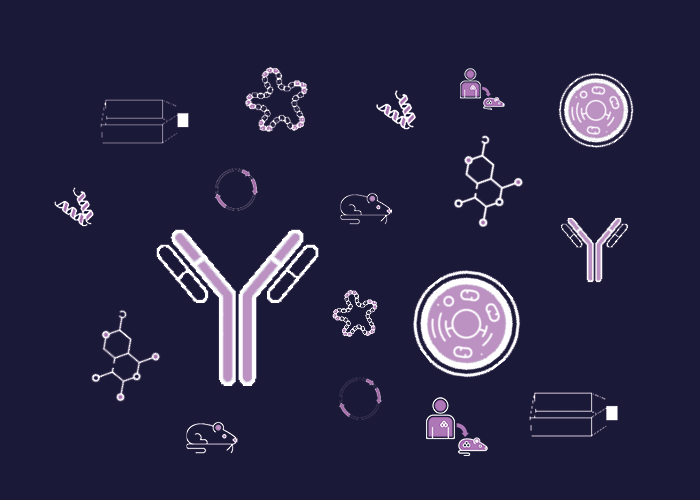
Cat. #151352
Anti-CD19 [PDR134]
Cat. #: 151352
Sub-type: Primary antibody
Unit size: 100 ug
Availability: 3-4 weeks
Target: CD19
Class: Monoclonal
Application: FACS ; IHC ; IF ; IP ; WB
Reactivity: Human
Host: Mouse
£300.00
This fee is applicable only for non-profit organisations. If you are a for-profit organisation or a researcher working on commercially-sponsored academic research, you will need to contact our licensing team for a commercial use license.
Contributor
Inventor: Karen Pulford
Institute: University of Oxford
Tool Details
*FOR RESEARCH USE ONLY (for other uses, please contact the licensing team)
- Name: Anti-CD19 [PDR134]
- Alternate name: CD19 Molecule; B-Lymphocyte Surface Antigen B4; T-Cell Surface Antigen Leu-12; Differentiation Antigen CD19; CD19 Antigen; CVID3; B4
- Research fields: Cancer;Cell signaling and signal transduction;Immunology;Stem cell biology
- Clone: PDR134
- Tool sub type: Primary antibody
- Class: Monoclonal
- Conjugation: Unconjugated
- Reactivity: Human
- Host: Mouse
- Application: FACS ; IHC ; IF ; IP ; WB
- Description: CD19 is a member of the immunoglobulin superfamily and has two Ig like domains. It is a single chain glycoprotein, present on the surface of normal and neoplastic B-cells. CD19 is expressed at an early stage by progenitor B-cells in bone marrow and during all stages of B-cell maturation. This antigen is lost upon terminal differentiation to plasma cells. CD19 is important for detecting both normal and neoplastic B-cells. CD19 is present on neoplasms arising from early B-cells (e.g. acute leukemia of pre-B-cells) and more differentiated B-cell neoplasms (e.g. chronic lymphocytic leukemia and non-HodgkinÄËĂÂĂÂs lymphoma). Leukemia phenotype studies have demonstrated that the earliest and broadest B cell restricted antigen is the CD19 antigen. The CD19 cytoplasmic domain binds tyrosine kinases and PI-3 kinase.
- Immunogen: Pokeweek-stimulated Daudi and Raji cells
- Isotype: IgM
- Myeloma used: P3/NS1/1-Ag4.1
Target Details
- Target: CD19
- Target background: CD19 is a member of the immunoglobulin superfamily and has two Ig like domains. It is a single chain glycoprotein, present on the surface of normal and neoplastic B-cells. CD19 is expressed at an early stage by progenitor B-cells in bone marrow and during all stages of B-cell maturation. This antigen is lost upon terminal differentiation to plasma cells. CD19 is important for detecting both normal and neoplastic B-cells. CD19 is present on neoplasms arising from early B-cells (e.g. acute leukemia of pre-B-cells) and more differentiated B-cell neoplasms (e.g. chronic lymphocytic leukemia and non-Hodgkin's lymphoma). Leukemia phenotype studies have demonstrated that the earliest and broadest B cell restricted antigen is the CD19 antigen. The CD19 cytoplasmic domain binds tyrosine kinases and PI-3 kinase.
Applications
- Application: FACS ; IHC ; IF ; IP ; WB
Handling
- Format: Liquid
- Concentration: 1 mg/ml
- Unit size: 100 ug
- Storage buffer: PBS with 0.02% azide
- Storage conditions: -15° C to -25° C
- Shipping conditions: Dry ice
References
- Sato S and Tedder TF. 1997. CD19 Workshop Panel report. In Kishimoto T, et al (eds) Leucocyte Typing VI, Garland Publishing Inc., New York and London, p 133-135
- Tedder TF et al. 1995. B-cell antigens: section report. In Schlossman SF, et al (eds) Leucocyte Typing V, Vol 1, Oxford University Press, Oxford, New York and Tokyo, p 491.


